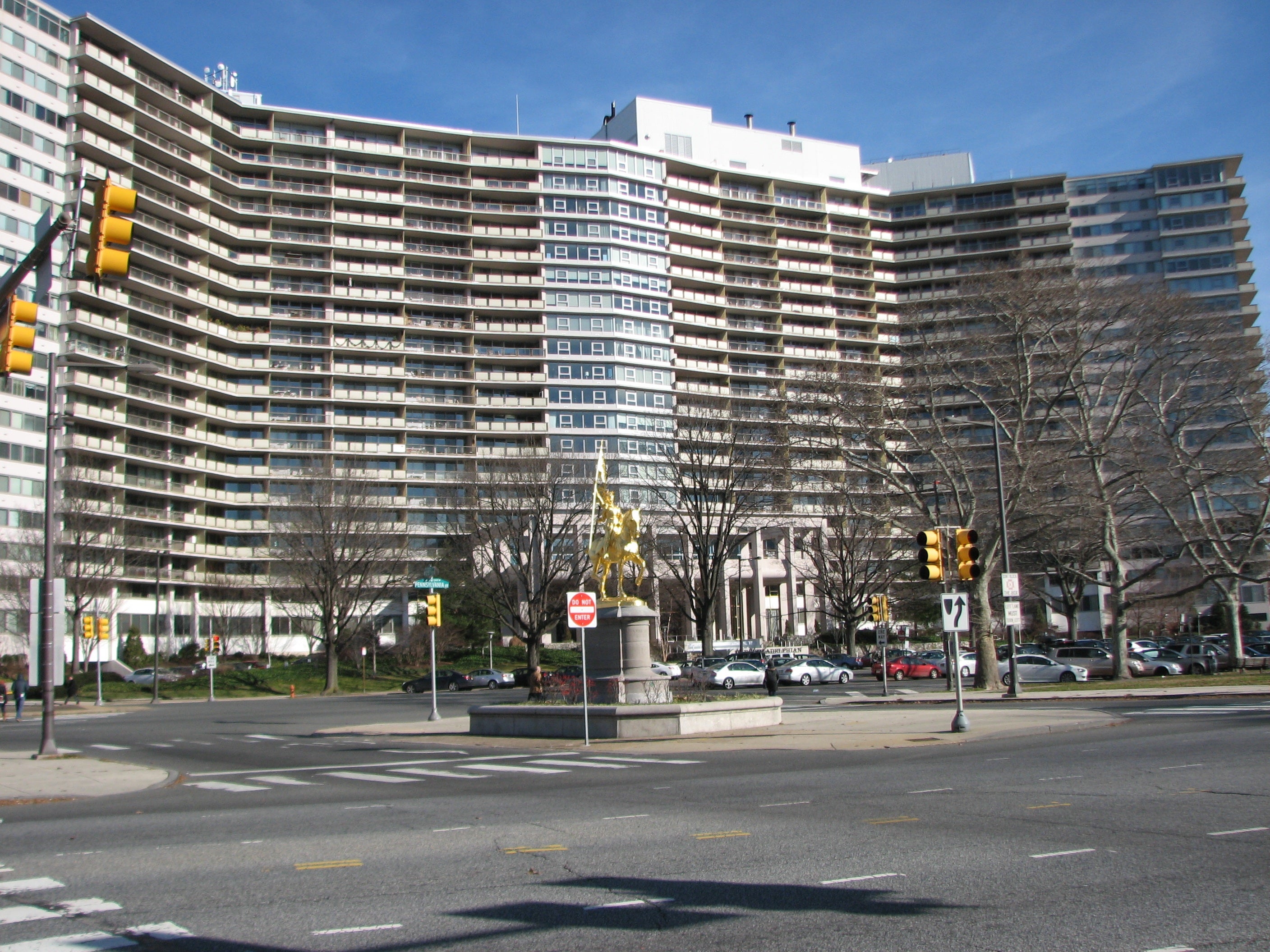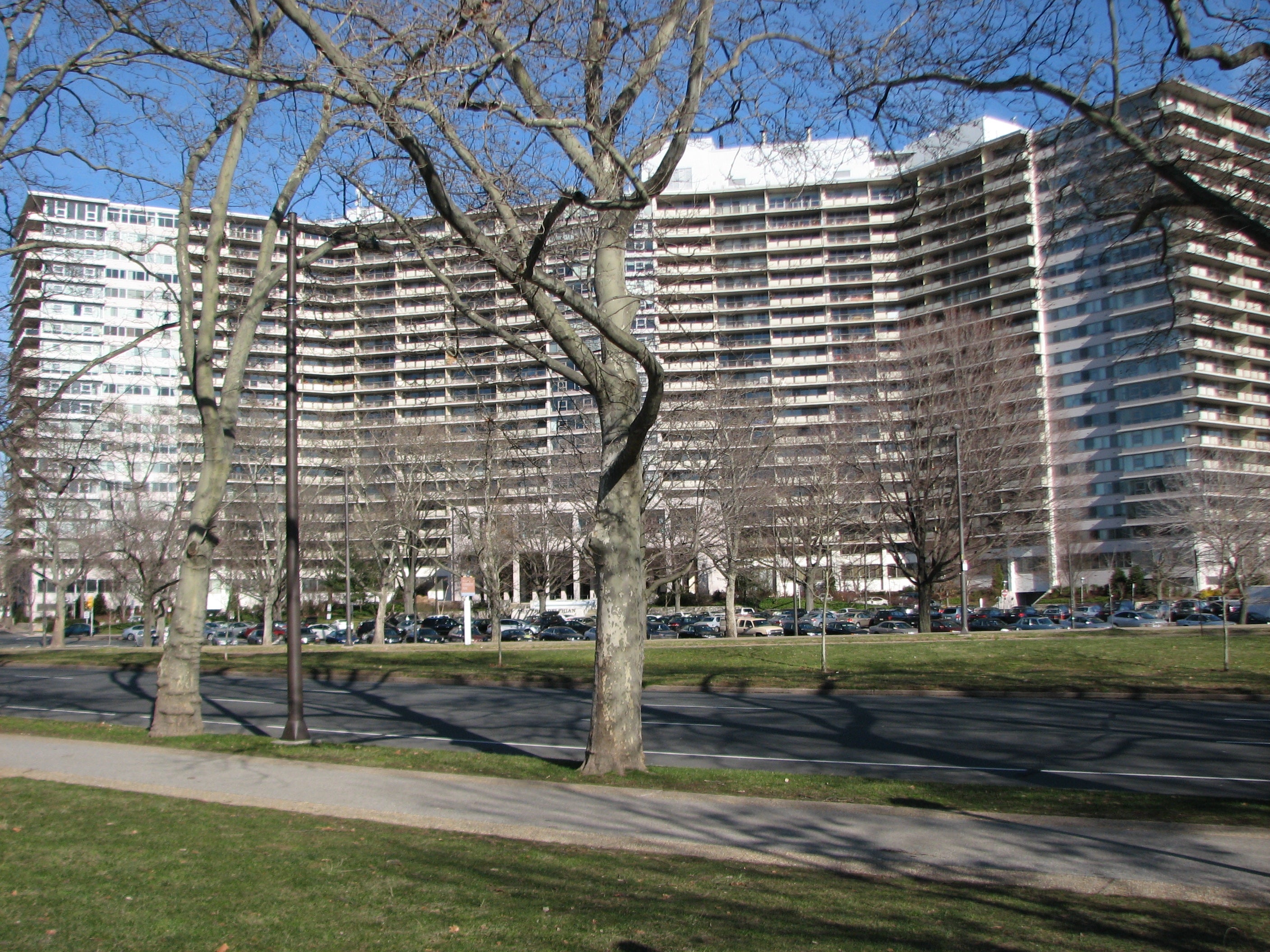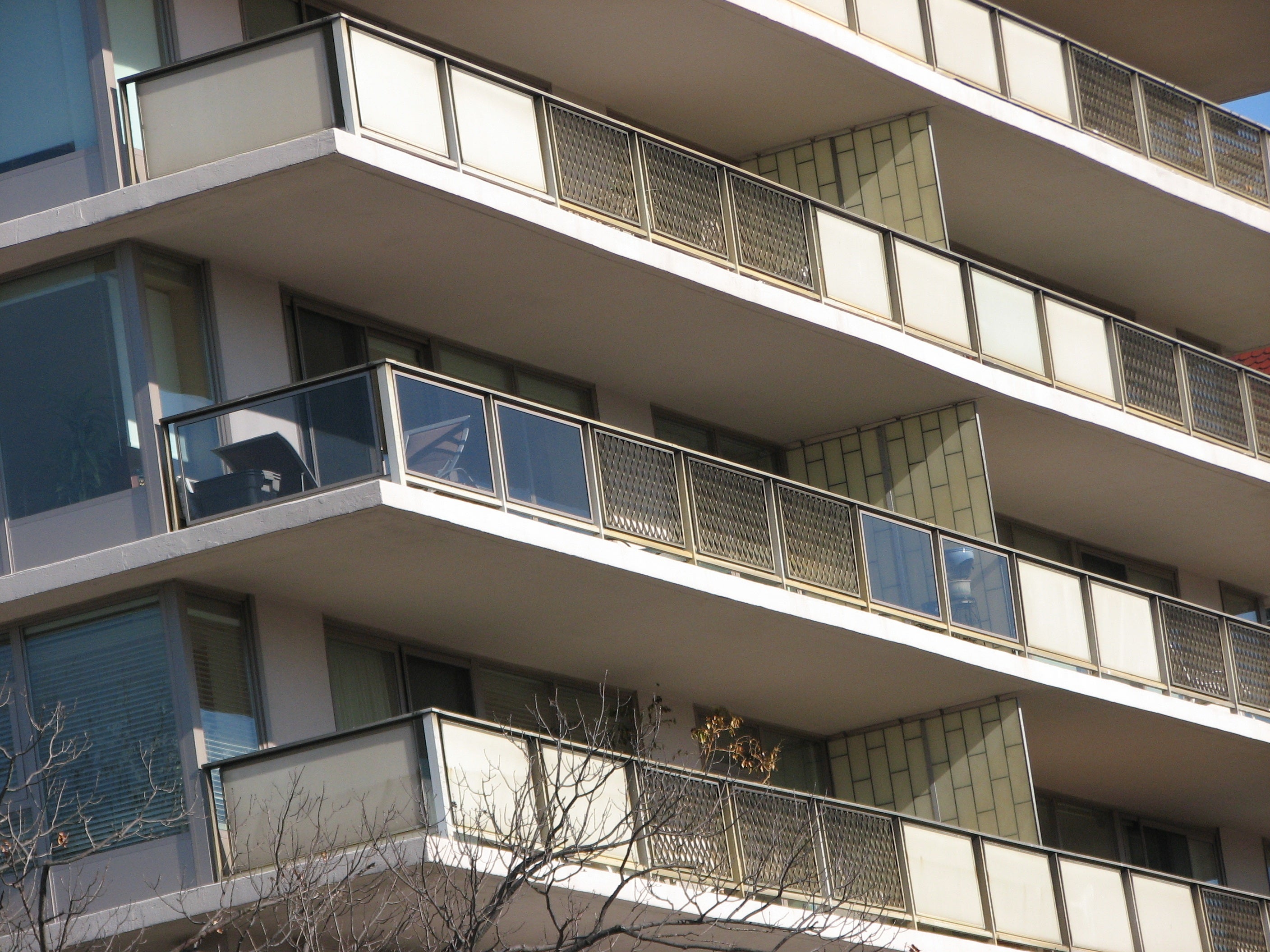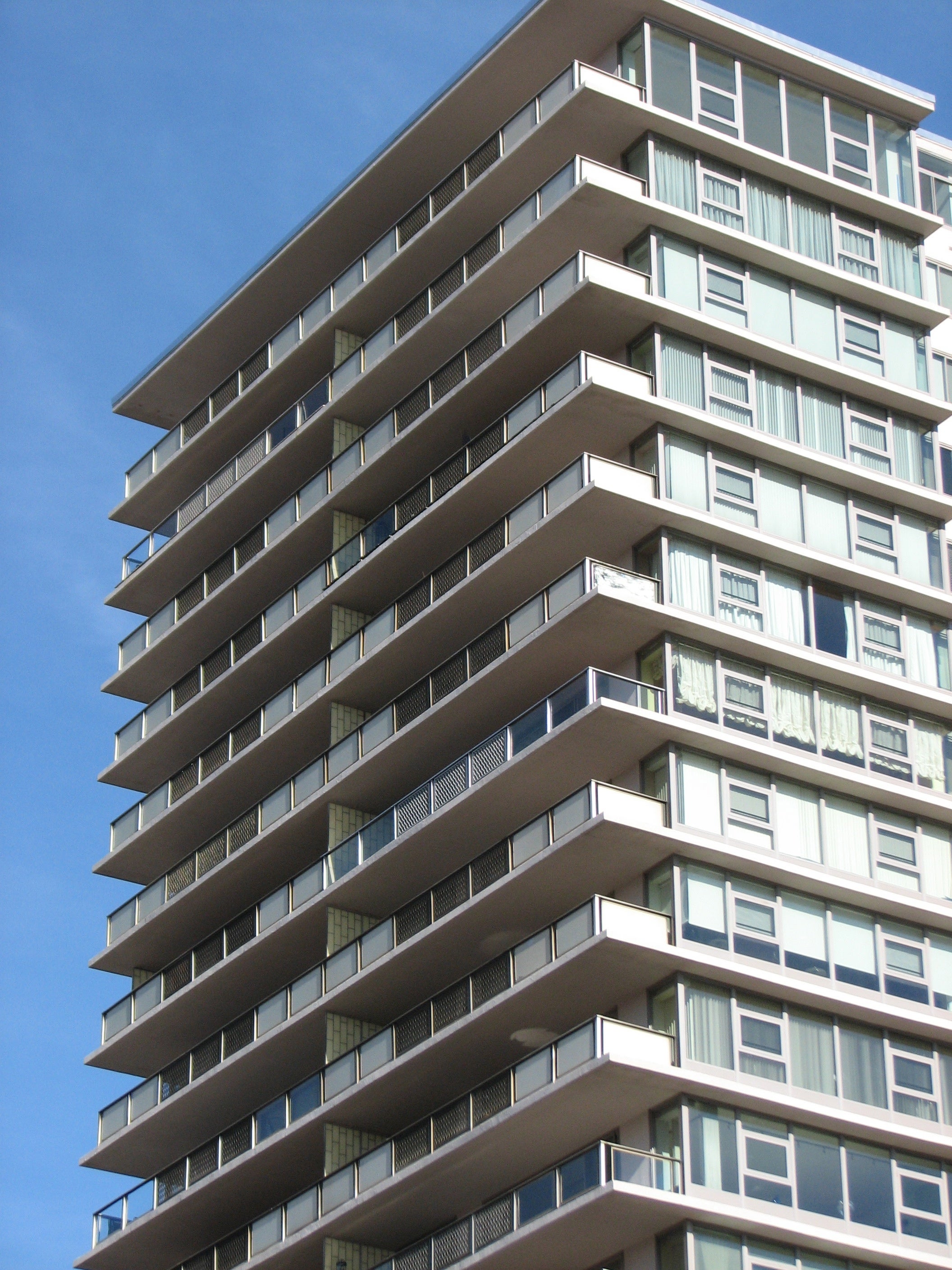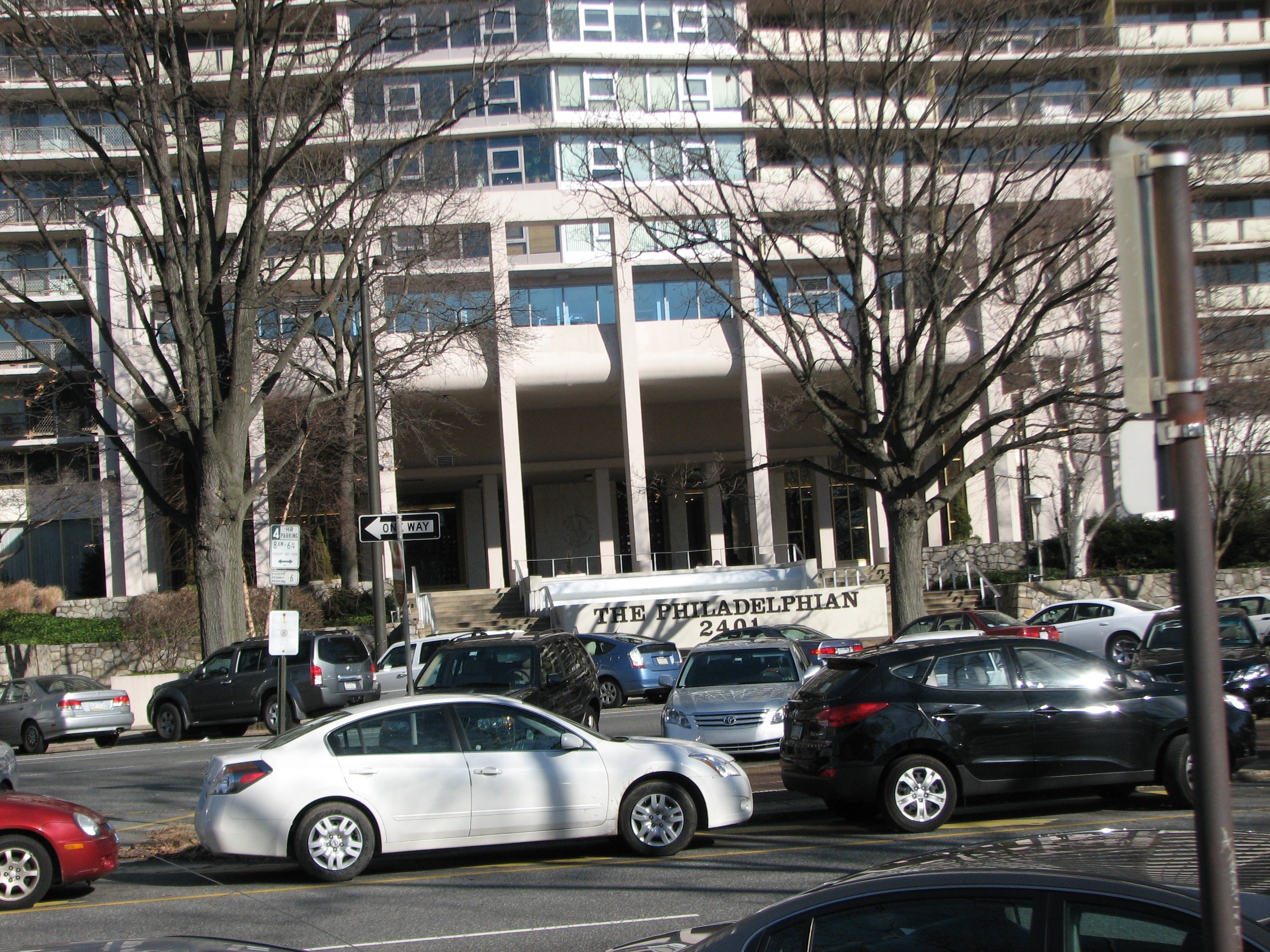Occupy Philadelphian? Residents’ group defeats plan to alter mid-century facade
A small revolution by residents of The Philadelphian has preserved the mid-century condominium building’s distinctive façade, at least for this year.
The Miami-modern behemoth of nearly 780 units at 2401 was built in 1963 by Samuel Oshiver, who was crowned locally as the “high priest of the high-rise.”
His residential projects included two buildings on Rittenhouse Square, the Claridge and the Savoy; Park City West on Ford Road; the Philip Murray House on Old York Road; Germantown House on Wayne Avenue; and Sutton Terrace in Bala Cynwyd.
But according to the Field Notes blog of the Preservation Alliance for Greater Philadelphia, the 20-story, brick-and-glass Philadelphian, “with its monumental terraces and undulating facades, is perhaps his most compelling design.”
Those monumental terraces were the rallying point for the aesthetic and economic debate that culminated in dueling petition tables in the building lobby, the resignation of the president of the owners association board, and formation of an activist group led by self-described veterans of the ‘60s protest era.
“What started the whole thing was a meeting of the board of The Philadelphian Owners Association where they suddenly presented plans for a balcony project,” explained resident Lee Lippman. “They presented a wild idea for changing the whole façade of this building by using glass panels on the balconies,” which had been designed with waist-high aluminum panels around them.
“It made no sense in terms of the integrity of the architecture,” Lippman said. “I felt this was not the greatest piece of architecture, but it has a design to it and the effect would be so wide if they took away the panels as they exist. They exist now as visual columns. If they took that away, it would just be a big emptiness that would change the entire character of the building.”
There is a smattering of condos where the switch has already occurred. Some residents prefer a better view from their living rooms or consider the change an upgrade to an aging building.
Evelyn Benson recalled one female board member saying, “When a lady gets old, you dress her up to look young and modern.”
Benson was horrified. “This building was 50 years old, and we had to dress her up to look young and modern? That’s really what got me. I think we should rejoice in our age and not try to hide it.”
The economics of the balcony proposal also raised eyebrows. The board said work would cost between $4 million and $6 million. Five years earlier, residents had undergone a reassessment that forced some to seek loans, get reverse mortgages, or even move out.
“Nobody wanted any assessment,” Benson said. “There was a great uproar.” The board responded by seeking $1 million to get the plan started and said half that sum would come from the association’s capital fund. That didn’t ease the minds of Lippman and Benson.
Lippman, a jazz musician and former graphic designer, flipped on Photoshop and created renderings of the building showing it as it is now and what it would like with glass balconies, which he displayed at one of the public meetings. He also penned a letter addressing the architectural integrity of the building for the in-house publication, The Philadelphian Voice.
The core of opposition to the glass balcony plan then grew to 15, who dubbed themselves the Concerned Owners Association. They launched a campaign to reject the budget line item that would have funded the initial phase of the balcony transformation. They had 30 days to get at least 50.1 percent of the owners to vote against the line item.
They sent out mailings to absentee owners and set up a table in the building lobby where they distributed ballots. By the second week, supporters of the glass balconies set up their own table.
“It ended up that we had about 58 percent,” Lippman said of the vote taken in late November. The line item was defeated, the special assessment was rejected. “No amount was put into the 2012 budget, so they can’t do anything until 2013.” The president of the board resigned as a result of the vote.
The Concerned Owners will continue their fight, they said.
“We are not opposed to restoration. If they want to take what’s there and clean it or paint it, I would vote for it, even if it would cost me some money. But there is no reason to spend $6 million to change the façade of the building. While it is not on the Philadelphia Register [of Historic Places}, it is a historic building,” Lippman said.
Contact the writer at ajaffe@planphilly.com.
WHYY is your source for fact-based, in-depth journalism and information. As a nonprofit organization, we rely on financial support from readers like you. Please give today.



